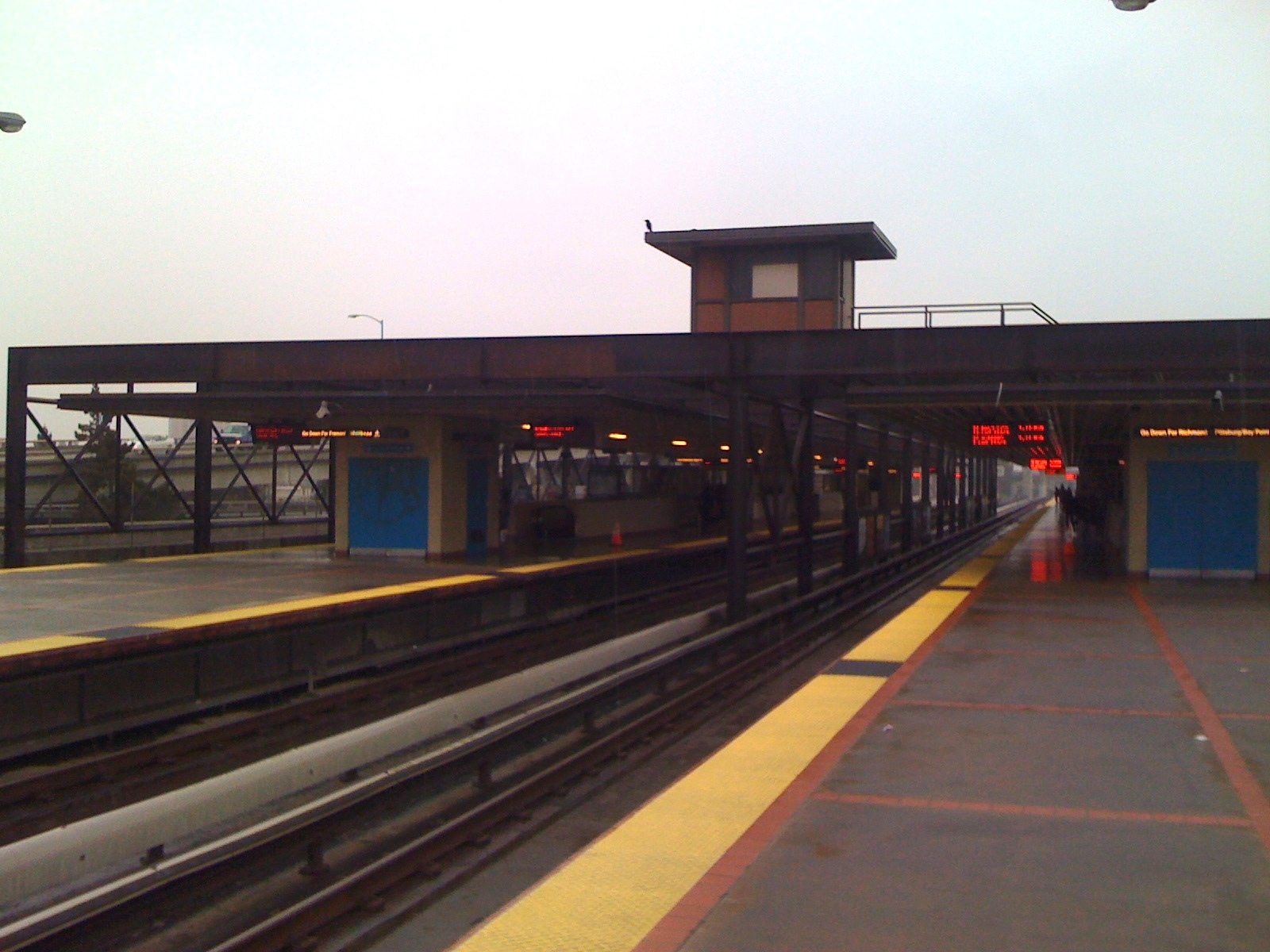
This is MacArthur Bart – the biggest and busiest of Bay Area BART stations. It took me a while to notice how horrible its design is. As my introduction to the Bart system at 17, I only noticed the amazing way the train shot me under the Bay to San Francisco. Now, living a few blocks away and relying on the station constantly, I notice more. Mostly I notice the slaughterhouse atmosphere of the design.
Nothing separates the passengers from the freeway, you’ll notice. This means a constant barrage of traffic noise. While the openness of the exposed steel has some appeal between incoming and outgoing tracks, I will never understand the design philosophy that rationalized leaving the exterior walls wide open to four-lane traffic.
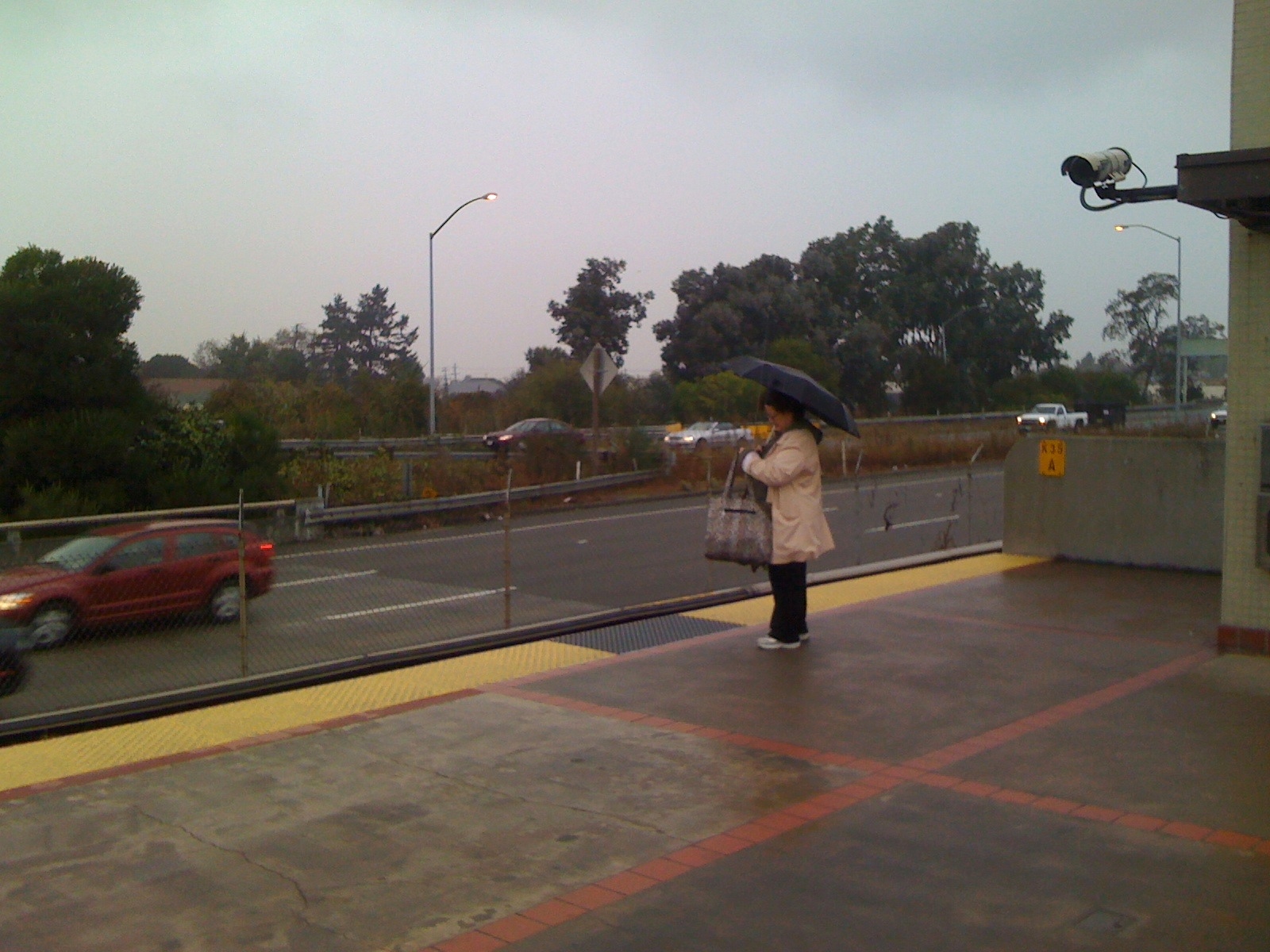
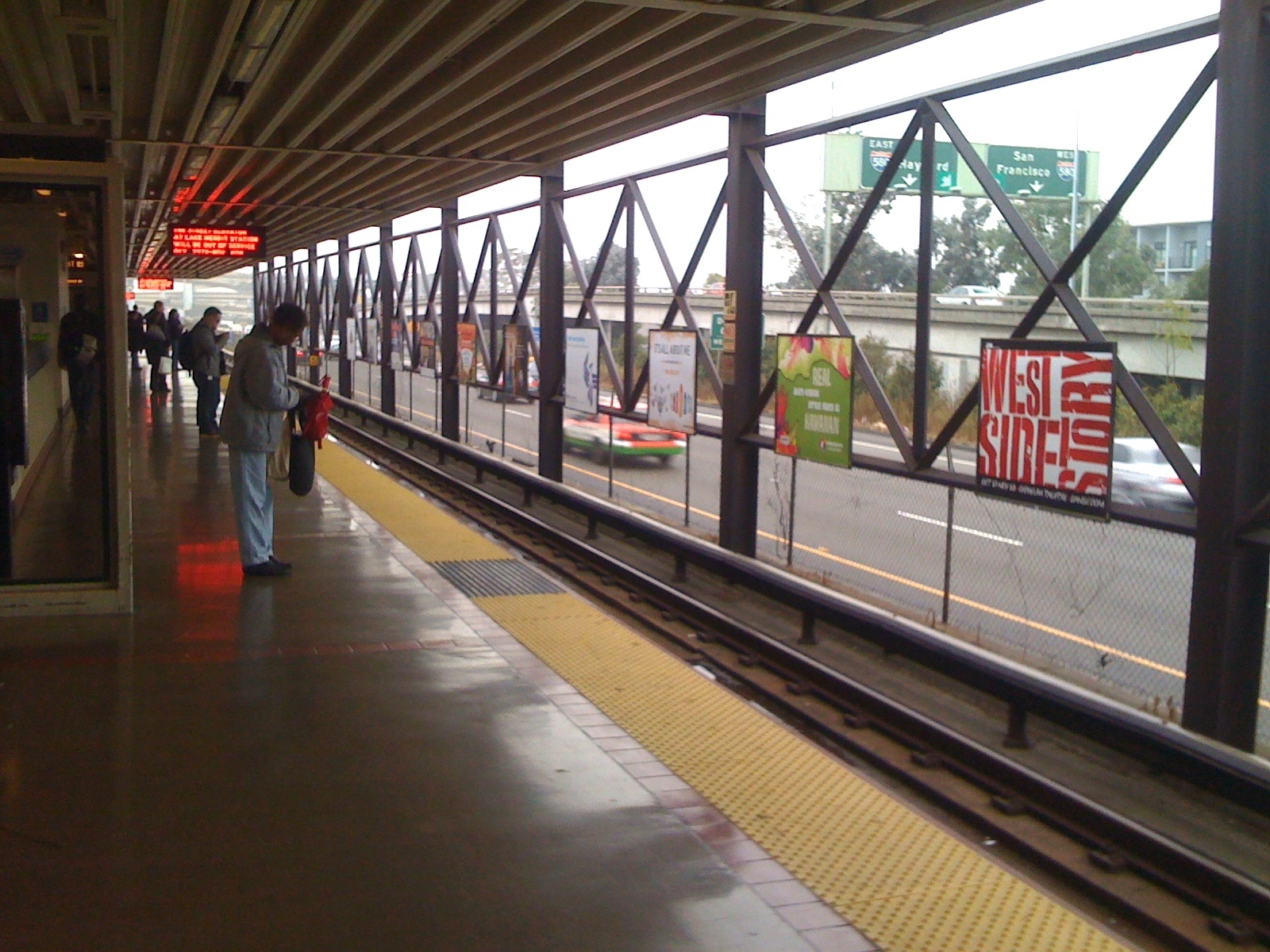
While researching an article on the BART system I wrote for Ashcan magazine recently, I ran across repeated descriptions of BART’s 1970’s stations as belonging to an architectural aesthetic known as Brutalism.
Wikipedia’s entry on “Brutalism” yields the following: “Brutalist buildings usually are formed with striking repetitive angular geometries, and, where concrete is used, often revealing the texture of the wooden forms used for the in-situ casting.” The MacArthur station is surrounded by freeways, and in fact it’s so buried by freeway concrete that it’s actually indistinguishable where the freeway supports end and the station begins. It’s impossible, really, to take a picture of the station itself – a view of the station from a block away reveals a series of freeway overpasses. So given this building site, working with concrete, massively, makes sense.
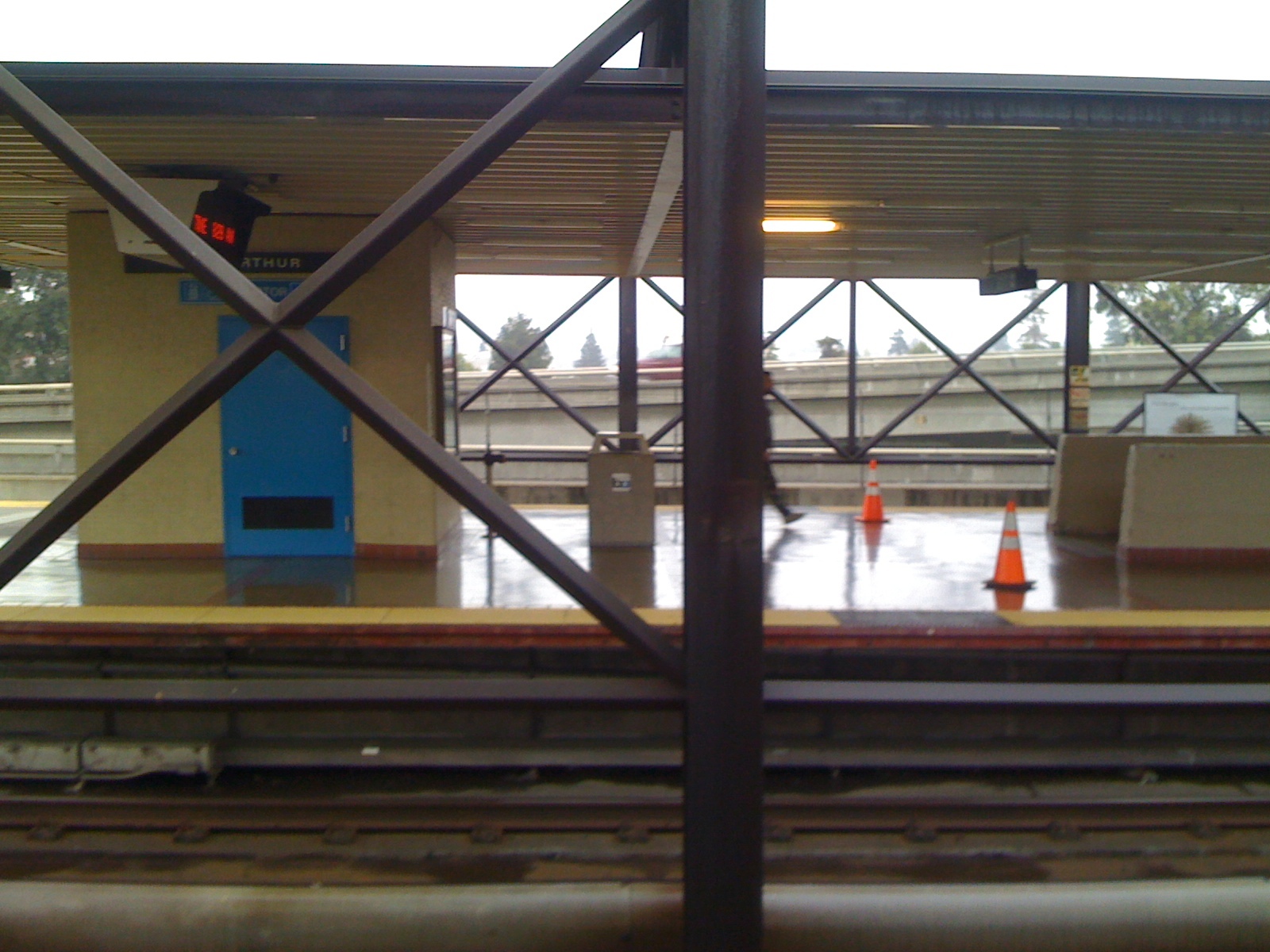
“Another common theme in Brutalist designs is the exposure of the building’s functions—ranging from their structure and services to their human use—in the exterior of the building.” This is a very common modernist design trend. Again, this doesn’t in itself make for a design that is indifferent to those who use the building. But it does open up the potential for it. If exposure of function becomes an end in itself, that is.
“Critics argue that the abstract nature of Brutalism makes the style unfriendly and uncommunicative, instead of being integrating and protective, as its proponents intended.” If this was, in fact, the intention behind this movement and behind the design of the building in question – MacArthur BART (Rockridge BART and other BART stations suffer from the same problem, or rather, their passengers suffer) fails to meet the intended goal and validates the criticism of it.
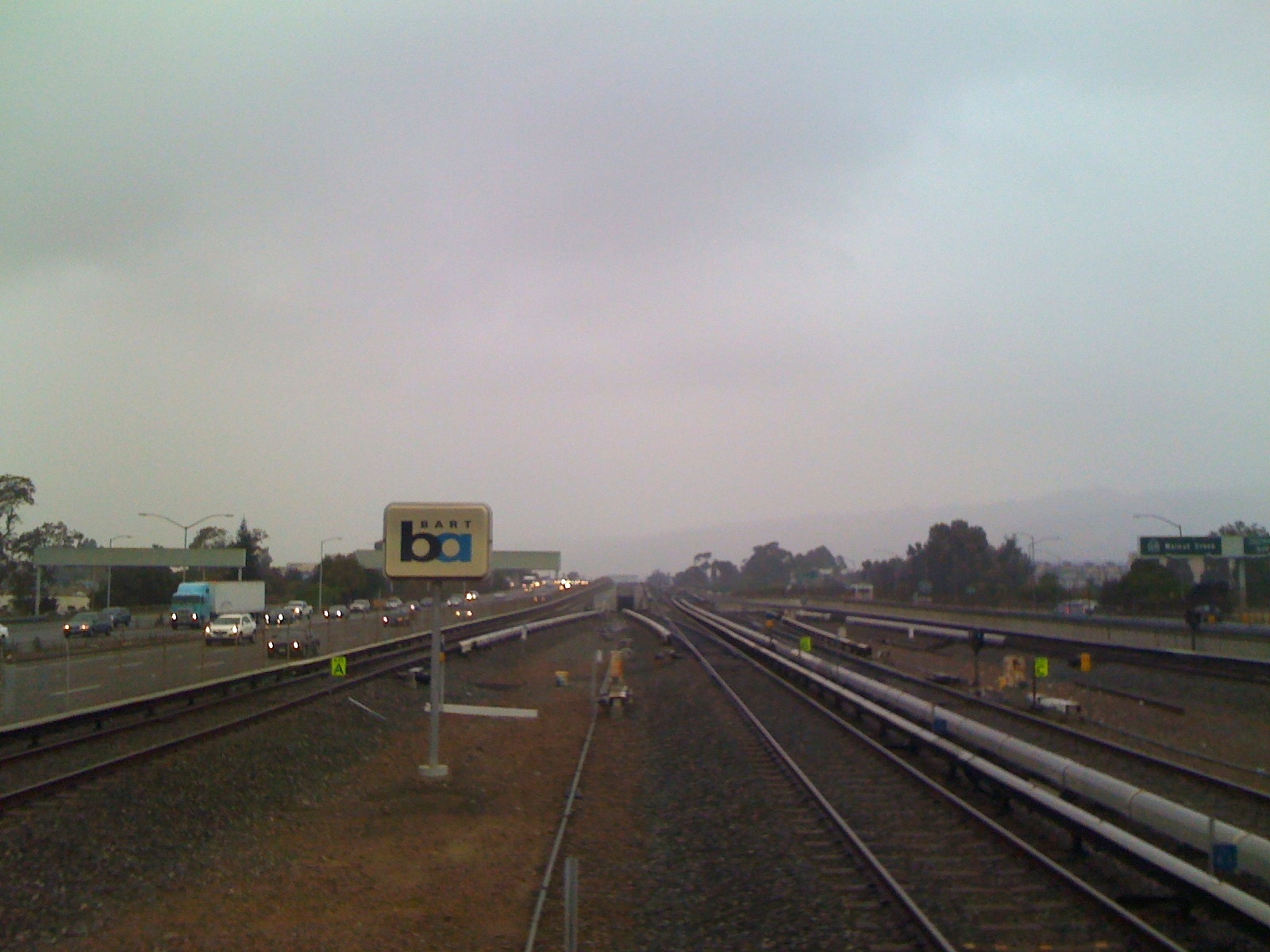
“Protective” is exactly what the station is not. Passengers are assaulted by noise from the freeway and offered a view of oncoming traffic and the smell of exhaust. In cold weather, the station is literally cold as well as figuratively.
In the design of BART stations, particularly MacArthur and others that place riders on platforms abutting eight lanes of howling freeway traffic, the Brutalism in effect isn’t only the kind with a capital b.
Nice one , Justin!